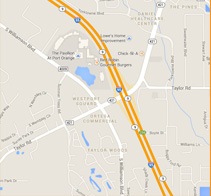News Archives
Threatened Shorebirds find sanctuary on Disappearing Island.
Written by Kristen Schmutz
Belden Communications News
Love is in the air on Disappearing Island, a popular boaters' destination near Ponce Inlet, as shorebirds have found their mates and built nests on the sandy shores. Volusia County employees have recently observed several Least Tern and Wilson's Plover nests on this picturesque island. However, these bird species are currently under threat.
Disappearing Island, a charming oasis accessible only by boat, emerges during low tide each day as the water recedes from Ponce Inlet. This natural wonder provides a temporary home to various bird species, including the sandy brown Wilson's Plovers and the Least Tern.
Plovers are solitary birds that primarily feed on fiddler crabs and are particularly susceptible to disturbances. Due to their restricted ranges, they seldom wander far from ocean coastlines, making them a species of great conservation concern in Florida. The incubation period for Wilson's plover eggs lasts approximately 24 to 25 days, while the chicks take 31 to 35 days to learn how to fly.
Least Terns possess a grayish-white body, a black-capped head, narrow wings, yellow legs, and a yellow bill. They tend to nest in colonies and exhibit a protective nature when defending their nests. Their eggs typically incubate for 19 to 25 days, and the chicks become proficient flyers within 19 to 20 days. Observers on the island may witness male least terns courting females by presenting them with tiny fish and engaging in a heartwarming nest-scraping ritual.
Recognizing the importance of protecting these shorebirds, the Volusia County Environmental Management Division has taken proactive measures. They have posted barriers and "do not enter" signs on Disappearing Island and Smyrna Dunes Park, urging people and their pets to avoid the designated areas. By adhering to these precautions, residents can play a crucial role in preserving the birds' habitats and ensuring their safety.
Shorebirds have a unique nesting behavior, laying their eggs directly on the sand. The flightless chicks then run on the sand until they can fly. However, the birds camouflage the nests, making it hard to spot the tiny chicks. Unfortunately, people engaging in recreational activities and dogs indulging in playful behavior threaten the birds. Even a momentary disturbance can lead to the destruction of an entire nesting colony. Moreover, if adult birds become frightened, they may abandon their eggs, leaving them vulnerable to predators and excessive sun exposure.
“If you see people entering the posted area or letting dogs run off leash near a posted area, gently let them know their actions may harm the birds and that eggs and small, flightless chicks are camouflaged and difficult to see,” advised Jaymie Reneker, manager of Volusia County’s Habitat Conservation Plan Program.
In cases where individuals persist in disturbing the birds or violating the posted guidelines, or to report an unposted nest, contact the Florida Fish and Wildlife Conservation Commission wildlife hotline at 888-404-3922, or residents can text their observations to Tip@MyFWC.com.
Bookmark & Share
User Comments
Be the first to comment on this post below!
Most Popular Articles
- DUI Checkpoint to Run This Weekend on Dunlawton
- Some City Residents Advised to Boil Water Through Wednesday
- Detectives Believe Body Found in Daytona is that of Murder Suspect
- Mosquito-Borne Illnesses Increase in Volusia County
- Port Orange Woman Wins $750,000 On Scratch Off
- Police Seeking Person of Interest in Port Orange Death
- Port Orange Fire Department Deploys to Florida Panhandle
- Just Us Girls Event to Feature Charity Auction for Murder Victim?s Family





